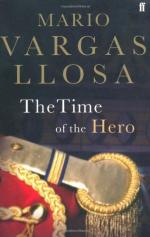|
This section contains 632 words (approx. 2 pages at 400 words per page) |

|
Colonial Literature and Independence
Although the conquistadors destroyed the libraries of the Inca, intellectuals of Indian and Spanish descent tried to recover as much as possible of pre-Conquest Peruvian literature. The most formidable of such efforts was undertaken by Garcilaso de la Vegaknown as El Inca Garcilaso. By his mother's side he was of royal Inca heritage and Spanish by his father. He put together several volumes of Incan legends in Spanish.
When the Spanish finally left Latin America in 1830, writers dabbled with the techniques of Romanticism before adopting the form of the realist novel as the best vehicle for national literatures. These Spanish American novels, the "novelas de la tierra" or Regionalist novels, describe Latin American landscapes and rural life in exhaustive detail. Examples of such novels include Dona Barbara by Romul Gallegos or The Vortex by Jose Eustasio Rivera. Once this literature began...
|
This section contains 632 words (approx. 2 pages at 400 words per page) |

|




